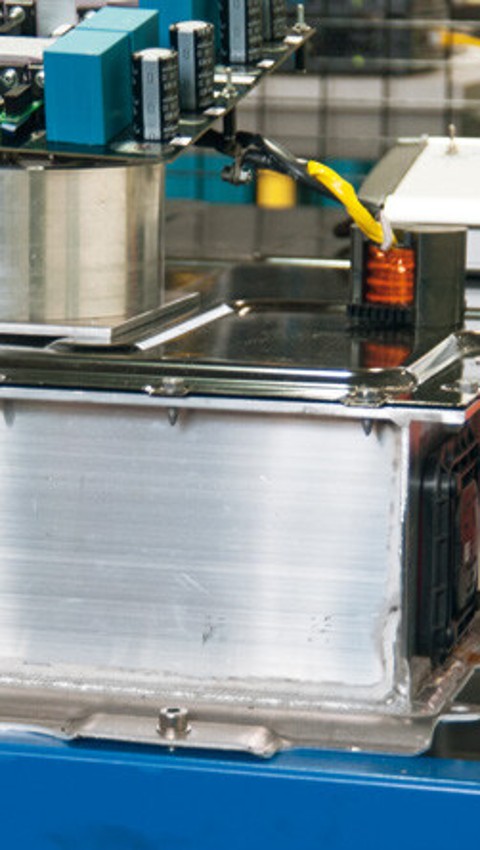UnABESA
Universal connection of Battery Storage Systems from Electric Vehicles for Stationary Applications
The joint project UnABESA aims to develop solutions to allow a universal connection of batteries from electric vehicles (automotive batteries) for stationary applications, so that the batteries from automotive applications can be made available as stationary energy storage device without intervening in the storage or cell architecture itself, i.e. without the need to modify the original automotive storage system.
This can be made possible by an additional coupling element between the automotive batteries and stationary inverter, an intelligent bidirectional DC-DC converter with galvanic insulation (see Fig. 1). All the functions of the automotive battery (efficiency, safety and cost-effectiveness) are retained and the battery, together with the coupling element, forms a stationary energy storage module with a universal electrical and logical interface – a “plug and play solution”. The DC-DC converter converts the voltage of the automotive battery highly efficient to the level required for the power converter, whereby the battery-side safety specifications are met and at the same time a costly power transformer can be avoided.
With the help of the coupling elements arbitrarily scalable stationary storage systems based on electric vehicle batteries can be build. In particular (heterogeneous) storage systems consisting of two to a few ten batteries will be economically interesting. Those energy storage systems can be used e.g. in charging stations for electric vehicles, to increase self-consumption together with PV, or for grid support. Larger distributed storage systems can be used in industrial environments, or for services in the energy market.
All partners have experience in the design or operation of components and concepts relevant for the coupling element, and also specific research capabilities. The composition of the consortium ensures optimal networking of the required competences and subsequent commercialization of the entire system.
Staff:
- Daniel Goldmann
- Markus Mühlbauer
- Florian Schaeufl
- Inken Zschunke
General project information:
- Running duration: 01.06.2017 - 31.05.2020, extended until 31.12.2020
- Funded by: Federal Ministry for Economic Affairs and Energy, BMWi
- Project Executing Organisation: Project Management Jülich, PtJ
- Project database: Enargus
Project partners:
- Bayerische Motoren Werke AG (Joint Coordinator)
- Inductron: Inductive Electronic Components GmbH
- Munich Electrification GmbH
- Vattenfall Europe Innovation GmbH (associate partner)
